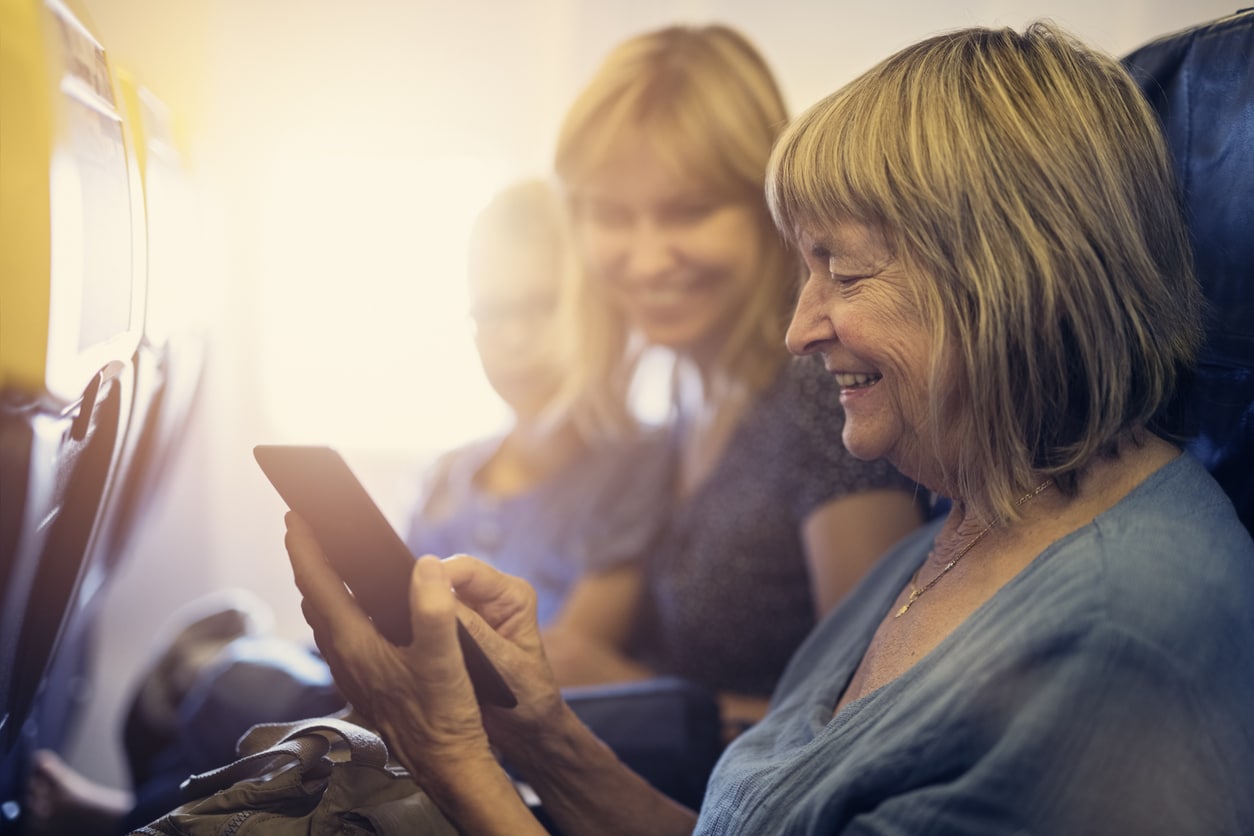Thinking of taking to the skies late this summer and into the fall? Air travel with or as a senior comes with some challenges. However, advancing age and health conditions don’t need to ground you.
Here are six tips to make your flights easy, uneventful and worry-free, especially if you are a senior or are dealing with challenging health issues.
Reserve seats for disabled travelers. According to the U.S. Department of Transportation, most airlines provide advance seat assignments for passengers with disabilities. Contact the airline in advance if you need to reserve a particular seat because of a disability, preferably when you make your reservation.
Arrange for transportation in the terminal. Airports offer cart rides within the buildings for passengers with disabilities or who need extra help getting from one area to another. After you’ve purchased a ticket, call the airline and request either a wheelchair or a cart to help you get from the curb to the gate, or from one gate to another.
Arrive early. No one likes to wait around, especially at a departure gate. However, there are many benefits to getting to the airport early, not the least of which is that you won’t run the risk of missing your flight. Airlines advise getting to the airport two hours early for a domestic flight, or three hours before an international flight. You can arrive a little closer to departure if you’re using online check-in, not checking any bags or using a familiar airport. But stick to the recommended guidelines if you have a disability or are a senior with mobility issues.
Wear loose clothing and move around the cabin while in flight. In an article, Harvard’s School of Public Health outlined some risks to air travelers who are elderly or unhealthy. Among these are risks to cardiovascular health among older and vulnerable passengers. Loose clothing helps reduce the risk of blood clots when you sit for long periods of time, and walking up and down the aisles while flying helps reduce the risk of painful and dangerous blood clots that can form with lower oxygen levels and reduced air pressure while aloft.
Pack medications in your carry-on. The Transportation Security Administration recommends packing in your carry-on only the medications you will need during your flight, it’s a good idea to pack all your necessary prescriptions and supplies in your small in-flight baggage. While it’s an inconvenience when your airline loses your checked baggage, it can be dangerous if your suitcase goes to Anchorage and you’re in Miami and your medication is inside. Including multiple bottles of pills and capsules takes up considerable room in your carry on.
A solution that can help reduce the baggage clutter, get you through security checks, and keep track of your medications while on-the-go are the customized dose packs from PersonalRX. These packs organize and consolidate your prescriptions for each meal or time period of the day so you can have peace of mind no matter how long you are away. We’ll cover more specific tips for traveling with multiple medications in a future blog.
Drink plenty of water and avoid alcohol. Plane travel can cause dehydration, which can affect blood sugar levels and cause fatigue. Drinking water before and during your trip can help keep the body hydrated. Stay away from alcohol and even caffeinated beverages which both can cause dehydration.
For some of you, it’s been a long time since you traveled for fun. Whether your next trip is by air, rail, or road, do some pre-trip planning so that your time away is safe and enjoyable. Stay tuned for more travel tips in our next blog post!


